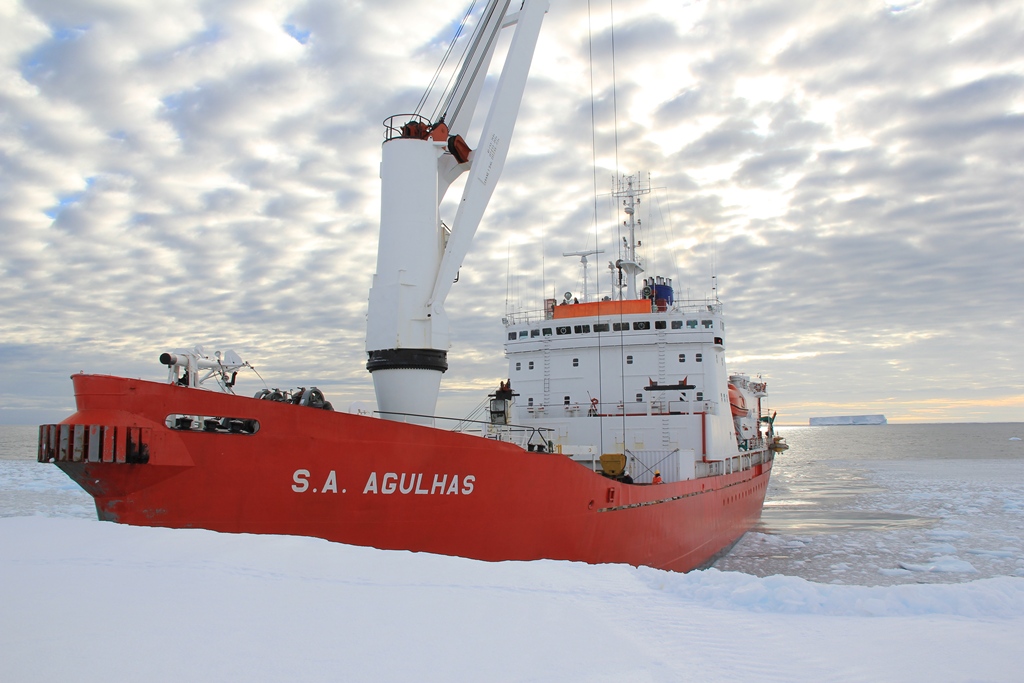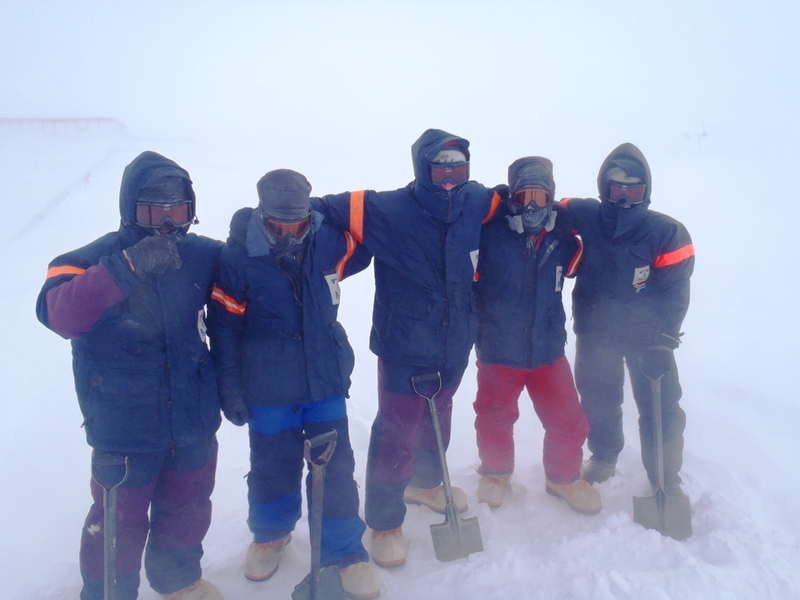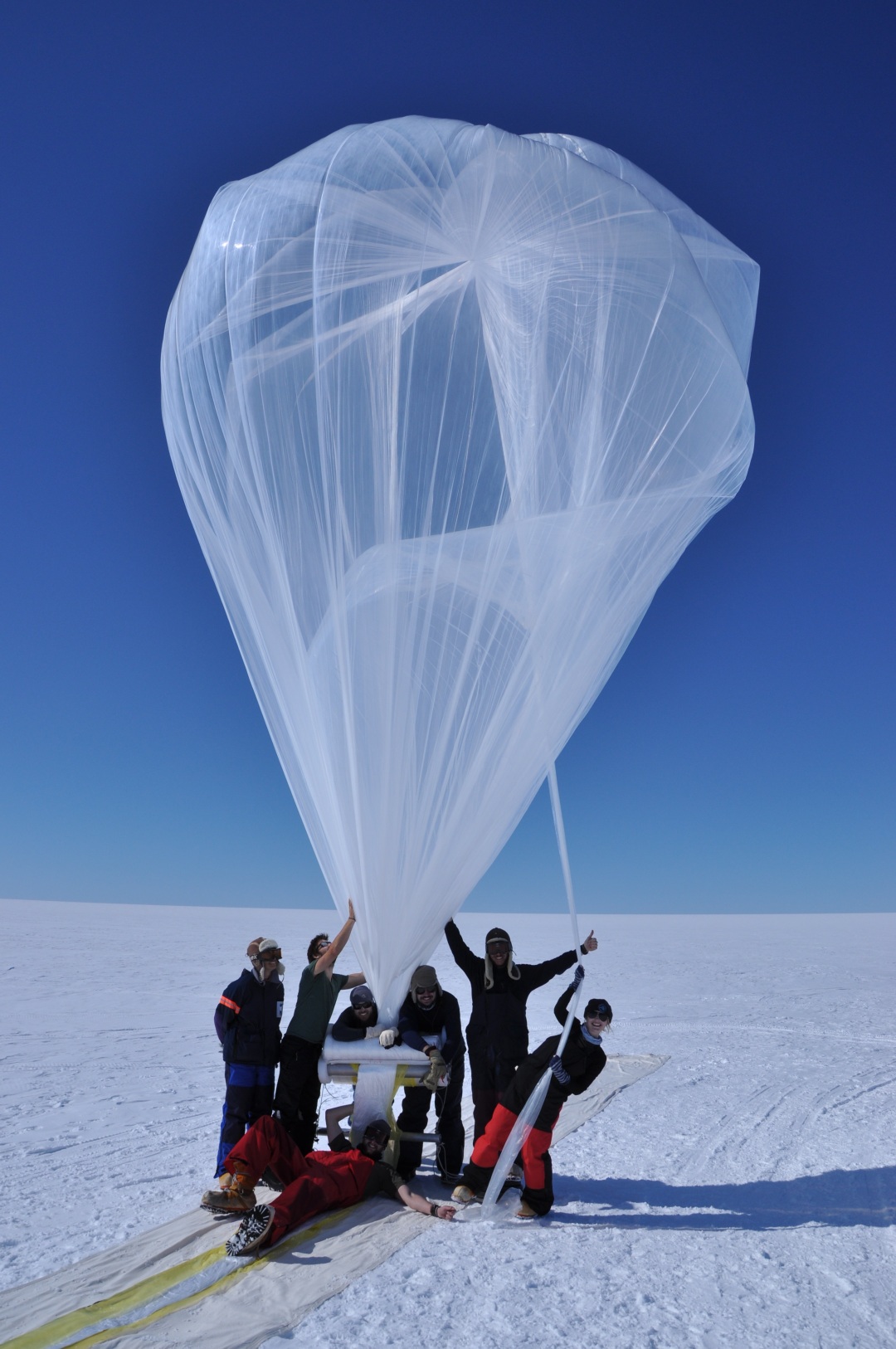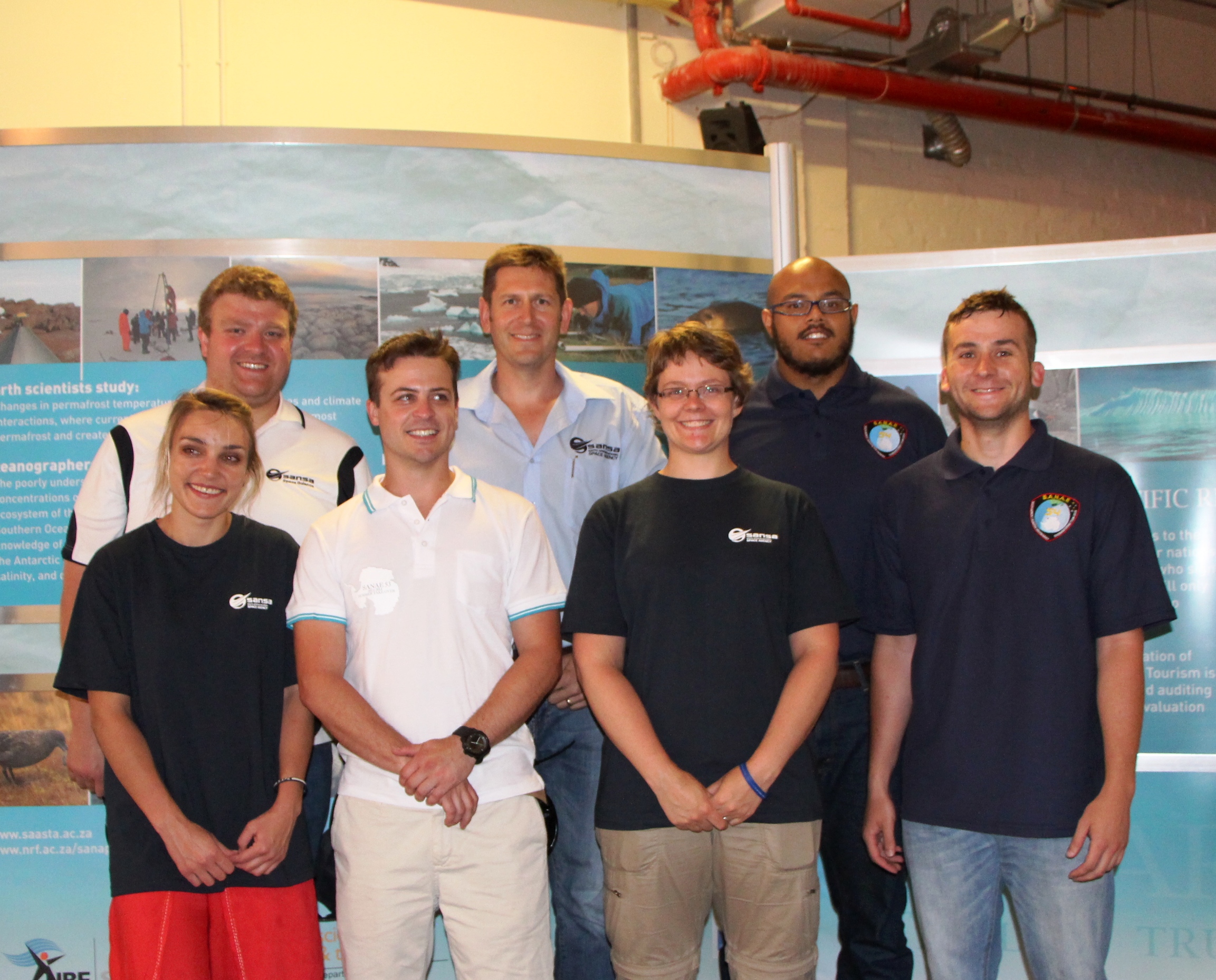
05 Dec Living on ‘THE ICE’

A wondrous world of hidden treasure awaits those brave enough to journey to the land of ice and snow. Antarctica, a land often described as the coldest, windiest, driest, least populated and most remote corner of the world, is not a place for the faint-hearted. Yet, those brave enough to journey there will forever have a deep connection to the icy wonderland.
SANSA’s 2014 Space Science Antartic team left for the South African National Antarctic Expedition (SANAE) IV base in Antartica on 5 December 2014. South Africa maintains a permanent research base there for scientists to participate in various research programmes. The SANSA team consists of researchers, engineers and postgraduate students who undertake space science research and monitor space weather from the base throughout the year, as part of the South African National Antarctic Programme (SANAP) aimed at studying and monitoring the near Earth-Space environment.

Getting there – a world away
The 4 500 km journey to Antarctica begins aboard the SA Agulhas II research and supply vessel anchored at Cape Town Harbour. Three weeks of rough seas, delays and seasickness lie ahead before the ship reaches the Ice Shelf. All discomfort aboard the ship becomes inconsequential when you catch your first glimpse of some of the most spectacular sights you could imagine. Breath-taking views of icebergs and ice floats and unparalleled sunrises and sunsets compete for attention as you watch the local inhabitants – penguins, whales and seals – splash about in the icy water off the Ice Shelf.

Living and working there – a challenging environment
Antarctica is often referred to as a “Window into Geospace” as the earth’s magnetic field lines converge at the poles and act as a funnel for space plasma to travel into the earth’s atmosphere; making it an ideal location for space science research.
SANSA, with support from the Department of Environmental Affairs, sends two teams to Antarctica every year: an overwintering team and a takeover team. The overwintering team live at the base for 14 months and the takeover team for three months to assist the new team to take over from the departing team. Scientists who live at the base for extended periods must be fit and able to carry out hard manual labour under extreme weather conditions. No one escapes the gruelling task of unloading the supplies and gear from the ship and hauling the load across 300 km of snow and ice to the SANAE IV base. With no shops on the Antarctic continent, it is critical to plan for all the supplies needed to work and live at the base, right down to the last tea bag.

A barometer of climate change
Antarctica holds a fascination for many people and has done for centuries. It is not just a hostile environment in which research teams study obscure phenomena. It is a “barometer” against which the rate and effects of climate change and global warming can be measured. This is why most developed and some developing countries have bases in Antarctica and why it is vital for scientists to continue their research despite having to cope with a landscape that is covered in ice sheets up to 4 km thick.
Snowfall is low in Antartica and most of the continent is technically a desert. Although this desert holds about 70 percent of the world’s fresh water. Ironically, the most precious and scarce commodity while living on “The Ice” is fresh water. Water is produced by melting the snow and ice in a snow smelter, known by most as the “smelly”. The water is then pumped up to the base for use. Shovelling snow into the “smelly” is a tough and tiring but critical to have water for everyday use. Bad weather, such as blizzards, often lead to water shortages, since it becomes too dangerous to be outside to top-up the “smelly”. When this happens, water restrictions kick in. Usually, showers and laundry are the first to be put on hold.

Not all work
Social interaction with colleagues is an important part of living at the base. Being in a confined environment with the same people for an extended period of time is not always easy, but the rapport that develops among team members often leads to lifelong friendships. Social activities, like playing soccer on the ice, celebrating birthdays and special holidays, visiting other stations or a good old South African braai, make for much fun while living on “The Ice”. One of the greatest treats is experiencing the natural phenomenon of beautiful coloured light displays in the sky, known as the Aurora Australis or the Southern Lights.
No place on earth compares to this icy wonderland which awaits those brave enough to take the risk and journey to the land of ice and snow.

Meet this year’s team who embarked on their journey to Antarctica on 5 December 2014.
Back row from left to right: Henk Potgieter, Dr Gert Lamprecht (not on the voyage but manages the project from SANSA in Hermanus), Daleel Lilla.
Front row from left to right: Vereesè van Tonder, Jonathan Ward, Ani Vermeulen and Ruhann Steyn.



